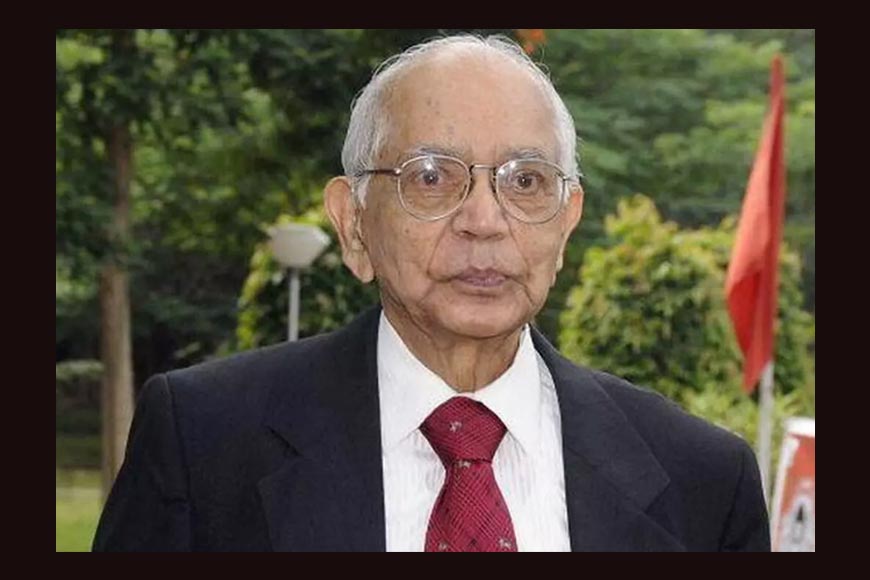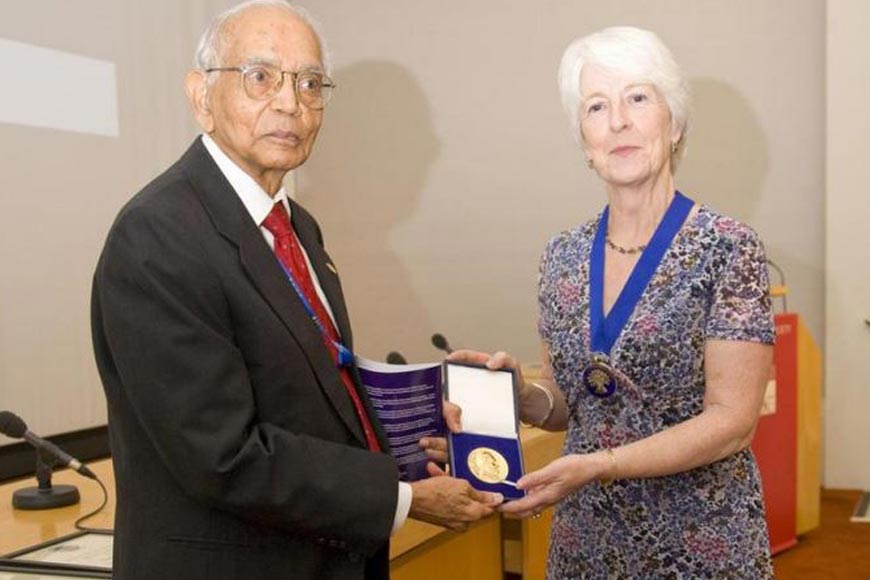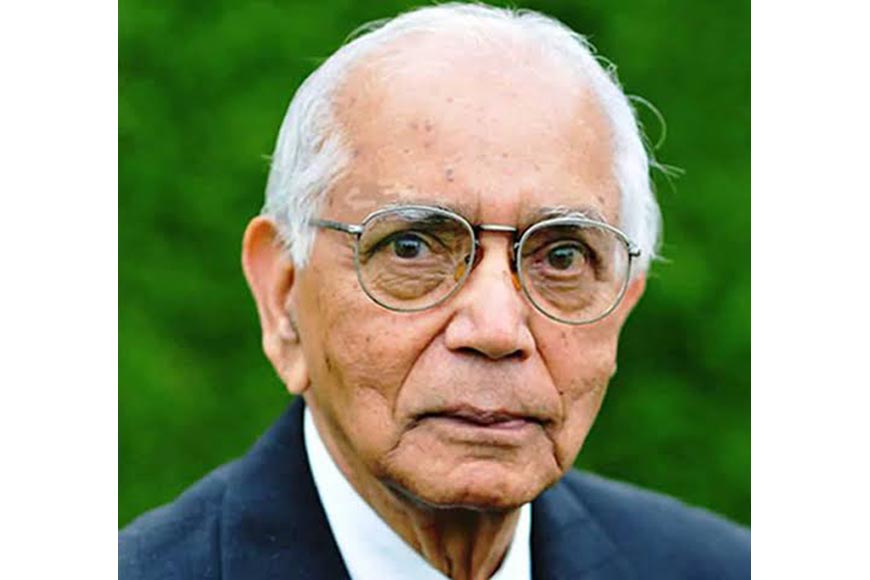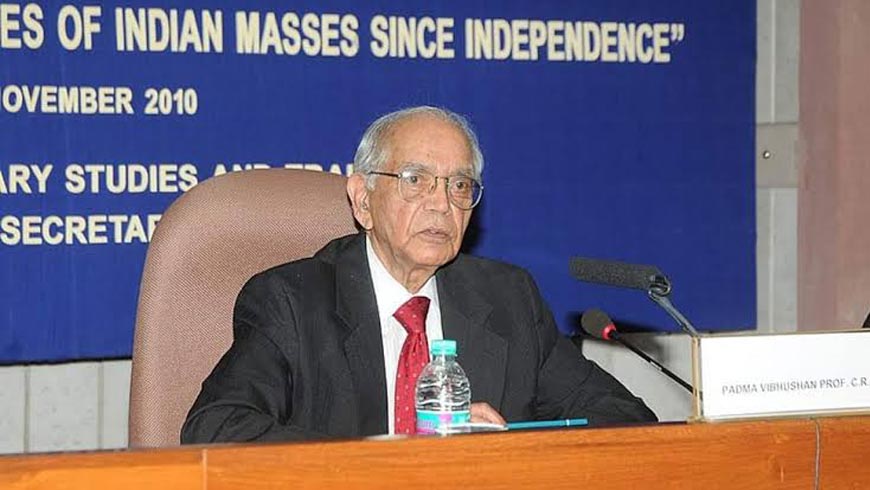Centurion statistician who worked from Calcutta gets highest International Prize in Statistics

Based on a research paper published in Kolkata during the 1940s, the 2023 International Prize in Statistics, (which is statistics’ equivalent of the Nobel Prize), has been awarded to the centurion Indian-American statistician and scientist, Caliampudi Radhakrishna (C.R.) Rao. The award, worth $80,000, will be handed over to C.R. Rao at the World Statistical Congress to be organized by the International Statistical Institute in Ontario, Canada, in July. The prize was established in 2016 and is awarded once every two years to an individual or team “for major achievements using statistics to advance science, technology, and human welfare.”
Aged 102 years currently, professor Rao is a ‘living legend’ whose work has influenced, in the words of the American Statistical Association, “not just statistics” but also “economics, genetics, anthropology, geology, national planning, demography, biometry, and medicine”. The citation for his new award reads: “C.R. Rao, a professor whose work more than 75 years ago continues to exert a profound influence on science, has been awarded the 2023 International Prize in Statistics.”

Rao’s innovative paper, ‘Information and accuracy attainable in the estimation of statistical parameters’, was first published in 1945 in the ‘Bulletin of the Calcutta Mathematical Society.’ He was barely 25 years old at that time and had completed his master’s degree in statistics two years earlier. The paper was subsequently included in the book, ‘Breakthroughs in Statistics, 1890-1990.’ In the paper, Rao demonstrated three fundamental results. These were called the ‘Cramer-Rao lower bound’, the ‘Rao-Blackwell Theorem’ and the third one formed the basis for a new interdisciplinary field ‘information geometry’. The paper’s results have helped scientists efficiently extract information from data and paved the way for modern statistics. They contribute in various places from the Large Hadron Collider, CERN to AI, data science, radar systems, and quantum physics.
However, it is interesting to note at this point how Rao’s foray into the field of statistics was by sheer chance. Born in Karnataka’s Hadagali to a Telugu family, Rao was schooled in different cities of Andhra Pradesh including Visakhapatnam and then pursued MSc in mathematics from Andhra University. Rao was a topper in mathematics at Andhra University but failed to secure a scholarship there for administrative reasons. He was also rejected for a mathematician’s job at an army survey unit because he was found too young for the post. He was barely 19 at that time.
Also read : The Nobel Prize news that came via Telegram
A dejected Rao came to Calcutta and stayed at a hotel, looking for a job. In the hotel, he met a man who was employed in Bombay and had been sent to Calcutta to be trained at the Indian Statistical Institute (ISI).. He asked Rao to apply to the institute as well. Rao did so, for a year-long training programme in statistics, hoping the additional qualification would help him land a job. He applied at ISI. Professor Prasanta Chandra Mahalanobis, the ‘Plan Man’ of India who established a strong statistical culture in India with the setting up of the Indian Statistical Institute (ISI) and nourished it diligently through his lifelong endeavours, was then the director of the institute. He was impressed by Rao’s genius and immediately took him under his wings. Rao was enrolled as a regular pupil at ISI. He earned an MA in statistics from Calcutta University in 1943. He then migrated to England and joined King’s College, Cambridge University to do his PhD in 1946-1948 under the supervision of Ronald A. Fisher considered the father of modern statistics. In 1965, he also earned a DSc degree from Cambridge.

However, his association with his alma mater, ISI continued for the next four decades until his superannuation in 1979, when he left the country and settled in the US. Rao started his career working at the Indian Statistical Institute and the Anthropological Museum in Cambridge. In a distinguished life, he has held many important posts including the Director of the Indian Statistical Institute, Jawaharlal Nehru Professor and National Professor in India, University Professor at the University of Pittsburgh, and Eberly Professor and Chair of Statistics and Director of the Center for Multivariate Analysis at Pennsylvania State University. Currently, he is a professor Emeritus at Pennsylvania State University and Research Professor at the University at Buffalo.
Rao’s mathematical ingenuity and his contributions to statistical theory have “earned him a place in the history of statistics,” opined late mathematician Samuel Karlin in one of his writings. Professor Rao’s enormous contributions to the growth of statistics in the country, notably at the Indian Statistical Institute cannot be denied. Renowned statistician and Professor Emeritus at the University of California, Late Erich Leo Lehmann once wrote, Rao was “the person who did the most to continue Mahalanobis’ work as a leader of statistics in India… this work (of Rao’s) was before its time and came into its own only in the 1980s.” So, Rao’s research paper, published in 1945, made an outstanding contribution, boosting the development of modern statistics and its widespread application in modern research.

Australian statistician Terry Speed claimed that the “1940s were ungrudgingly C.R. Rao’s. His 1945 paper … will guarantee that, even had he done nothing else – but there was much else.” Indeed, one of Rao’s papers in 1948 offered a novel generic approach to testing hypotheses, now widely known as the “Rao score test”. The three test procedures – the likelihood ratio test of Jerzy Neyman and E.S. Pearson (1928), the Wald test (1943) of Abraham Wald, and the Rao score test (1948) – are sometimes called “the holy trinity” of this branch of statistics.
Rao also contributed to orthogonal arrays, a concept in combinatorics that is used to design experiments whose results are qualitatively good, as early as 1949. A 1969 Forbes article described it as “a new mantra” in industrial establishments.
He has received top civilian accolades from the Indian government including the Padma Bhushan (1968) and Padma Vibhushan (2001). Now, we all wait for this 102-year-old genius to receive the prestigious award and make us all feel proud of his achievements.











